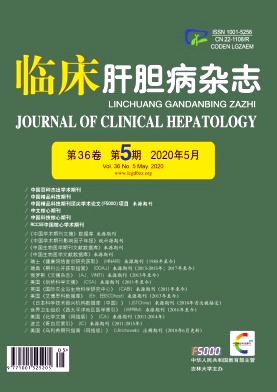|
[1] MCHENRY L, LEHMAN G. Difficult bile duct stones[J]. Curr Treat Options Gastroenterol, 2006, 9(2):123-132.
|
|
[2] MIZUKAMI Y, SAITO H, OBARA T, et al. Temporary use of an accuflex stent for unextractable common bile duct stones[J].J Gastroenterol Hepatol, 2000, 15(6):680-683.
|
|
[3] ZHOU CH, ZHOU W, MENG YT, et al. An excerpt of endoscopic management of common bile duct stones:European Society of Gastrointestinal Endoscopy(ESGE)guideline(2019)[J]. J Clin Hepotal, 2019, 35(6):1237-1241.(in Chinese)周春华,周玮,孟雨亭,等.《2019年欧洲消化内镜学会临床实践指南:胆总管结石的内镜治疗》摘译[J].临床肝胆病杂志,2019, 35(6):1237-1241
|
|
[4] FRITZ E, KIRCHGATTERER A, HUBNER D, et al. ERCP is safe and effective in patients 80 years of age and older compared with younger patients[J]. Gastrointest Endosc, 2006,64(6):899-905.
|
|
[5] WANG J, CHEN W. Treatment strategies of complicated extrahepatic bileduct stones[J]. Chin J Dig Surg, 2019, 18(12):1113-1117.(in Chinese)王坚,陈炜.复杂肝外胆管结石的治疗策略[J].中华消化外科杂志,2019, 18(12):1113-1117.
|
|
[6] KATSINELOS P, PAROUTOGLOU G, KOUNTOURAS J, et al.Efficacy and safety of therapeutic ERCP in patients 90 years of age and older[J]. Gastrointest Endosc, 2006, 63(3):417-423.
|
|
[7] TRIKUDANATHAN G, NAVANEETHAN U, PARSI MA. Endoscopic management of difficult common bile duct stones[J].World J Gastroenterol, 2013, 19(2):165-173.
|
|
[8] LI JS, LIU F, LI ZS. An excerpt of endoscopic biliary stenting:indications, choice of stents, and results:European Society of Gastrointestinal Endoscopy(ESGE)clinical guideline-updated 2018[J]. J Clin Hepotal, 2018, 34(11):2311-2315.(in Chinese)李家速,刘枫,李兆申.《2018欧洲胃肠内镜学会指南更新:内镜下胆管支架置入的指征、支架选择和疗效》摘译[J].临床肝胆病杂志,2018, 34(11):2311-2315.
|
|
[9] MOESCH C, SAUTEREAU D, CESSOT F, et al. Physicochemical and bacteriological analysis of the contents of occluded biliary endoprostheses[J]. Hepatology, 1991, 14(6):1142-1146.
|
|
[10] GROEN AK, OUT T, HUIBREGTSE K, et al. Characterization of the content of occluded biliary endoprostheses[J]. Endoscopy, 1987, 19(2):57-59.
|
|
[11] CETTA F, RAPPUOLI R, MONTALTO G, et al. New biliary endoprosthesis less liable to block in biliary infections:Description and in vitro studies[J]. Eur J Surg, 1999, 165(8):782-785.
|
|
[12] VAISHNAVI C, SAMANTA J, KOCHHAR R. Characterization of biofilms in biliary stents and potential factors involved in occlusion[J]. World J Gastroenterol, 2018, 24(1):112-123.
|
|
[13] ZHANG RL, CHENG L, CAI XB, et al. Comparison of the safety and effectiveness of endoscopic biliary decompression by nasobiliary catheter and plastic stent placement in acute obstructive cholangitis[J]. Swiss Med Wkly, 2013, 143:w13823.
|
|
[14] MATSUDA Y, SHIMAKURA K, AKAMATSU T. Factors affecting the patency of stents in malignant biliary obstructive disease:Univariate and multivariate analysis[J]. Am J Gastroenterol, 1991, 86(7):843-849.
|
|
[15] EUM YO, KIM YT, LEE SH, et al. Stent patency using competing risk model in unresectable pancreatic cancers inserted with biliary self-expandable metallic stent[J]. Dig Endosc,2013, 25(1):67-75.
|
|
[16] BROUNTZOS EN, PTOCHIS N, PANAGIOTOU I, et al. A survival analysis of patients with malignant biliary strictures treated by percutaneous metallic stenting[J]. Cardiovasc Intervent Radiol, 2007, 30(1):66-73.
|
|
[17] LIN XH, TING PH, LUO JC, et al. Predictors of stent occlusion in patients with unresectable pancreatic cancer after biliary metal stents[J]. J Chin Med Assoc, 2019, 82(10):762-766.
|
|
[18] WEICKERT U, VENZKE T, KÖNIG J, et al. Why do bilioduodenal plastic stents become occluded? A clinical and pathological investigation on 100 consecutive patients[J]. Endoscopy, 2001, 33(9):786-790.
|
|
[19] KWON CI, KIM G, JEONG S, et al. Experimental study on the friction effect of plastic stents for biliary stone fragmentation(with video)[J]. Dig Endosc, 2018, 30(1):107-113.
|
|
[20] REY JF, MAUPETIT P, GREFF M. Experimental study of biliary endoprosthesis efficiency[J]. Endoscopy, 1985, 17(4):145-148.
|







 DownLoad:
DownLoad: